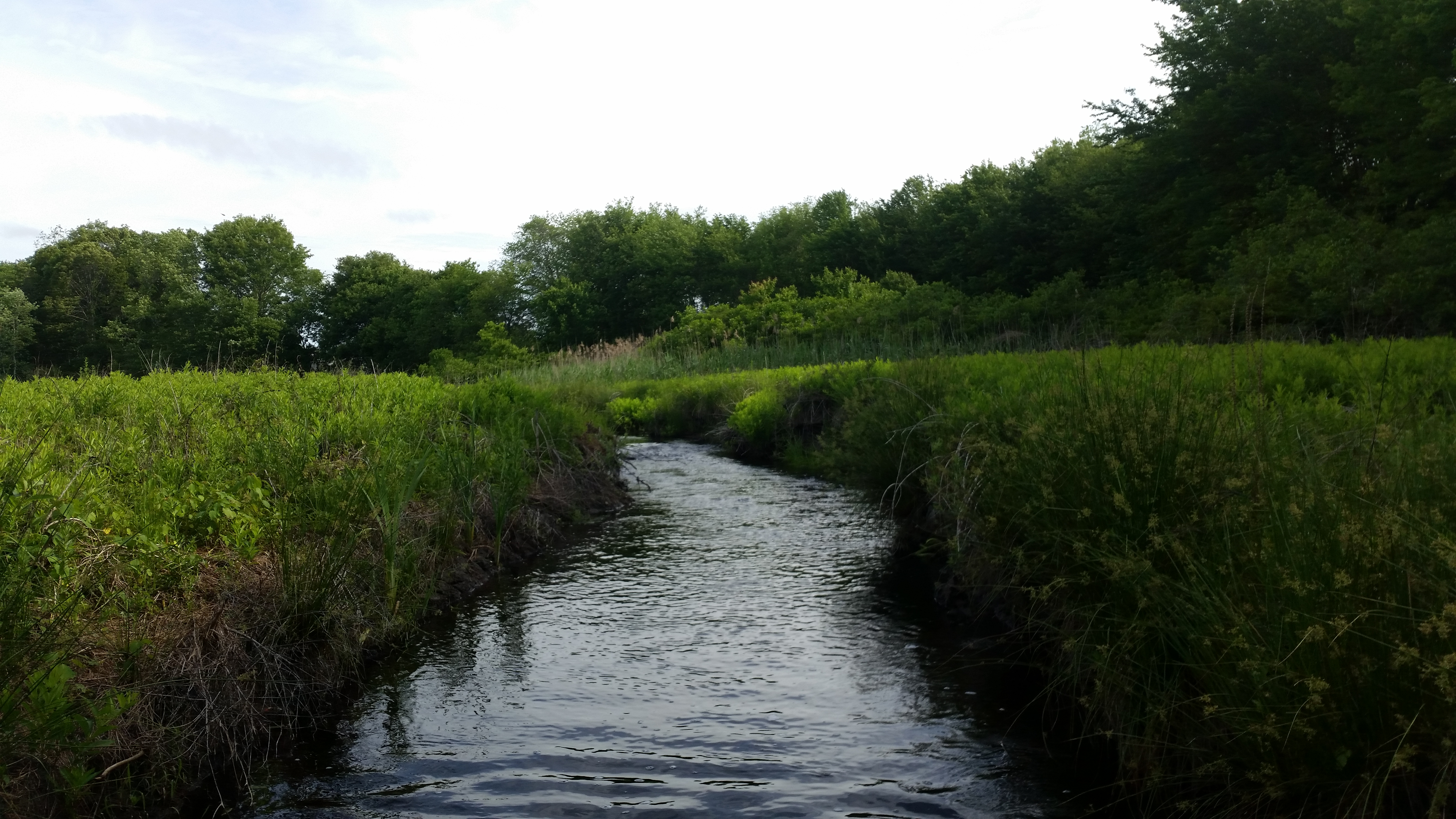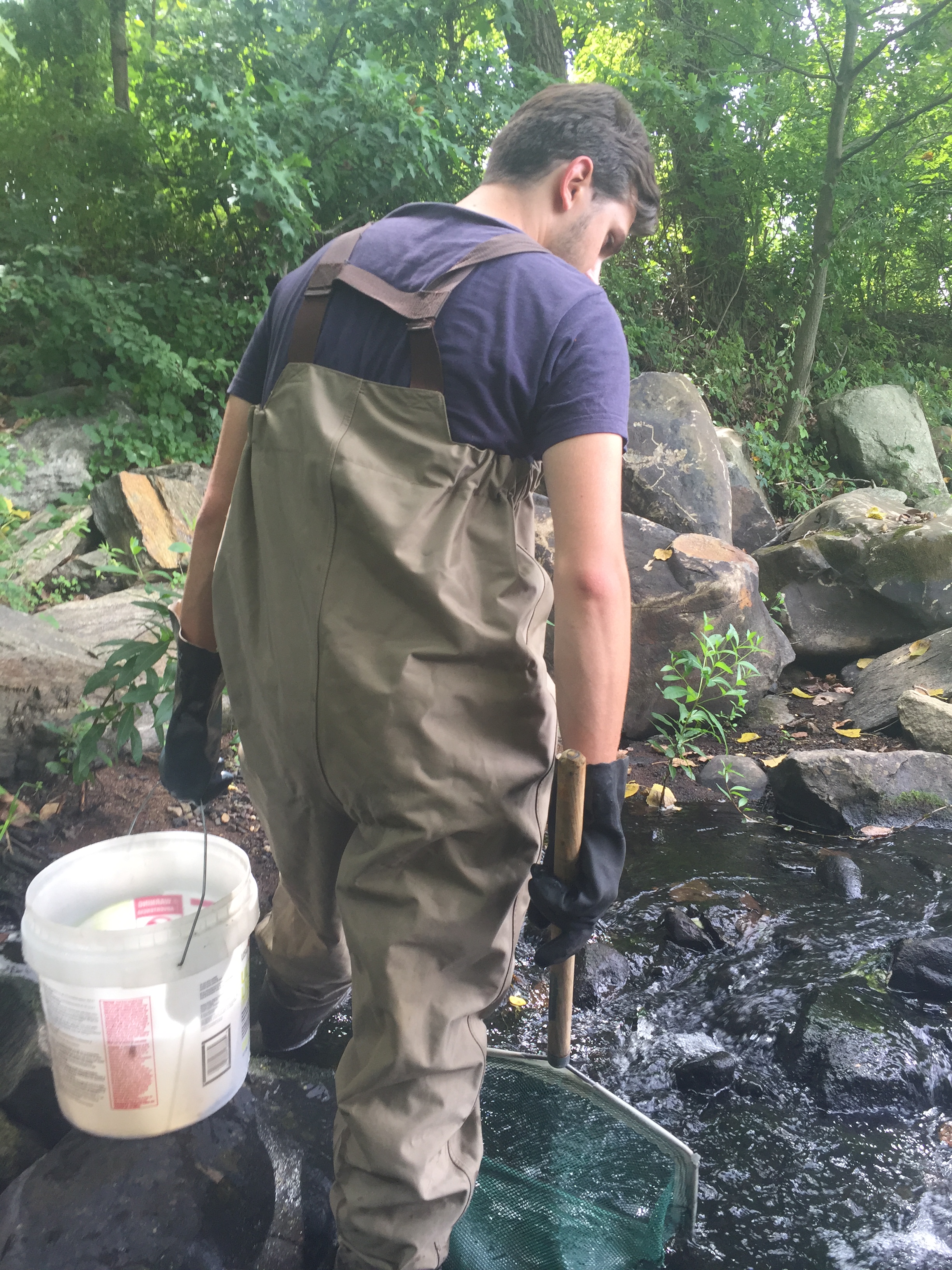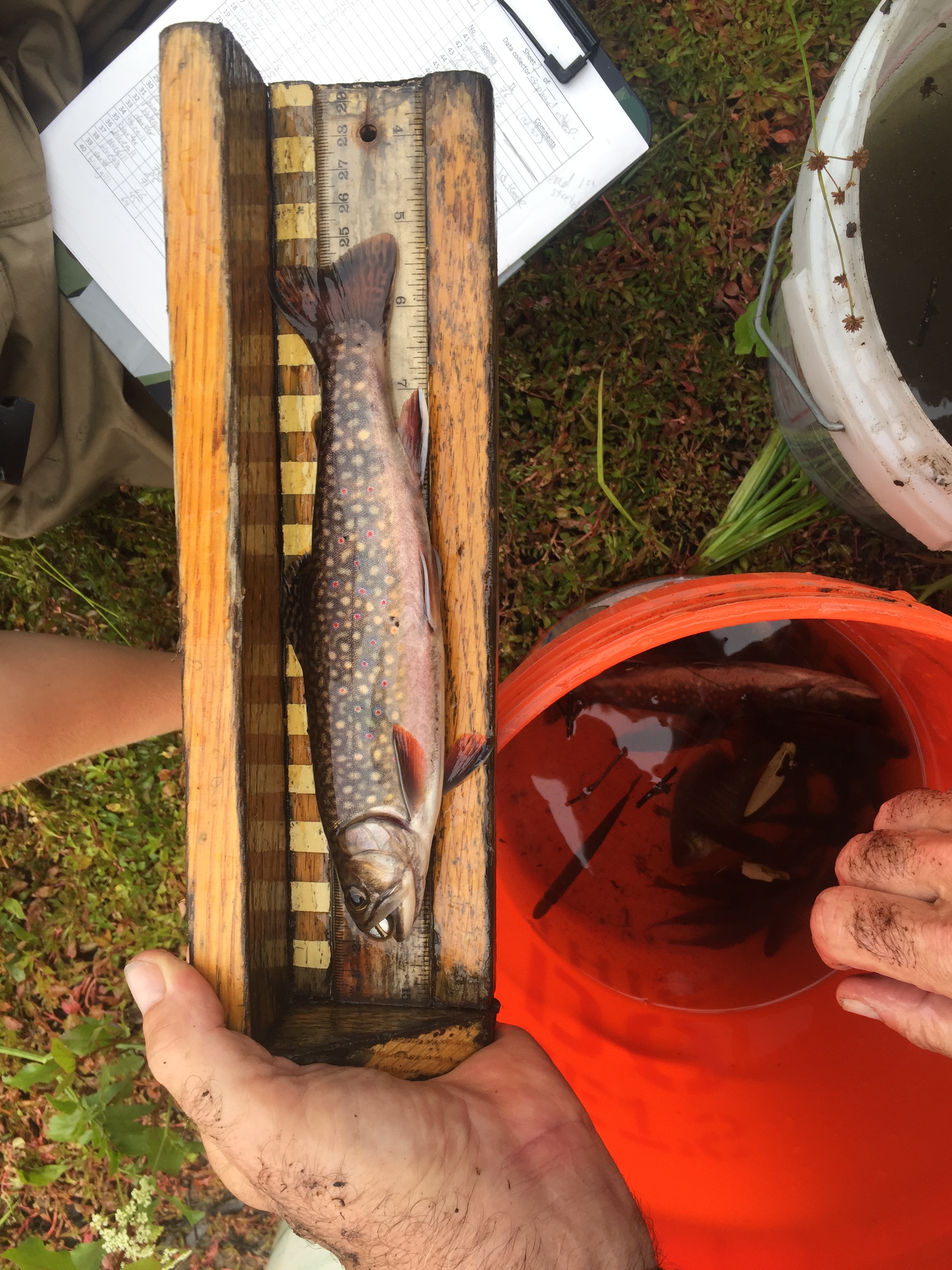
Today’s guest post comes from Gregory Ostrinski, a seasonal field scientist monitoring dam removal sites for Save the Sound and CT DEEP.
Dams in Connecticut are interwoven with the history of America, playing an important role in the industrialization that helped to make New England what it is today. Starting with settlers in the 1600s, dams have been constructed for a number of purposes. First there were grist and sawmills, replaced by textile mills once the industrial revolution took hold. One famous Connecticut resident, Eli Whitney, created the cotton gin, which helped to make these large-scale textile mills possible.
Many mill dams were abandoned in favor of larger, more centralized dams during the industrial revolution. After electricity came into widespread use, a second round of abandonment occurred. Mills and dams all over the northeast fell into disrepair, with threat of dam failure creating hazards for whatever was downstream.

An impact of these dams was the halting of fish migration upstream. Diadromous fish, or fish that travel between salt and fresh water to live and spawn, could not make it past these barriers. Even the Atlantic salmon, a fish used to jumping over waterfalls, found the dams too much of an obstacle. The effect took time for people to notice, but eventually the salmon, herring, and shad failed to appear in the rivers, and people began to take the dams into account.

Since 2015, CFE/Save the Sound has undertaken several dam removal projects throughout Connecticut. The first removal was at Hyde Pond along Whitford Brook in Stonington. The second was at Pond Lily, along the West River in Woodbridge. Two additional dams were removed from the Quinnipiac River in 2016.
In the summer of 2017, post-removal monitoring of the West River included traps set upstream, at Konold’s Pond. This stream was previously unreachable by shad and herring due to the Pond Lily dam. Three alewife were found in this trap, including two female ready to spawn. This is excellent news as Konold’s Pond provides abundant habitat perfect for alewife spawning.

Pond Lily is just one of the success stories seen throughout the state. Another recent CFE/STS removal at Hyde Pond on the border of Mystic and Stonington revealed a huge amount of young eels during an electrofishing survey in the later season. While young eel have the ability to travel up small dams, they often have trouble getting over the dam when traveling back to the ocean to spawn after growing for years in freshwater. With young eels moving in to Whitford Brook, a large outflow of adult eel can be expected in coming years, propping up the struggling Atlantic eel population in Connecticut.
In Colchester, an old paper mill once ran with help from a dam stretched across the Jeremy River. The mill went out of business years ago, but the dam remained. Just last year, the dam was finally removed, opening up miles of habitat in a tributary of the Salmon River. Sea lamprey that make their nests in rocky, fast-flowing rivers such as the Jeremy took advantage of this newly opened habitat just a year later, when several dozen nests were found covering the floor of the river. Additionally, salmon stocked by the Connecticut Department of Energy and Environmental Protection were found to still be growing in the river during late-season electrofishing.
Overall, the fish we have seen travelling up newly-opened habitat looks to be very promising for the future health of rivers across Connecticut. It shows that fish will take advantage of these new rivers with little urging, they just need our help removing the dams. Connecticut Fund for the Environment plans to continue these dam removals, and the more dams we remove, the more fish will be able to call Connecticut their home.

they also removed a small dam in Mill River Park, Stamford.